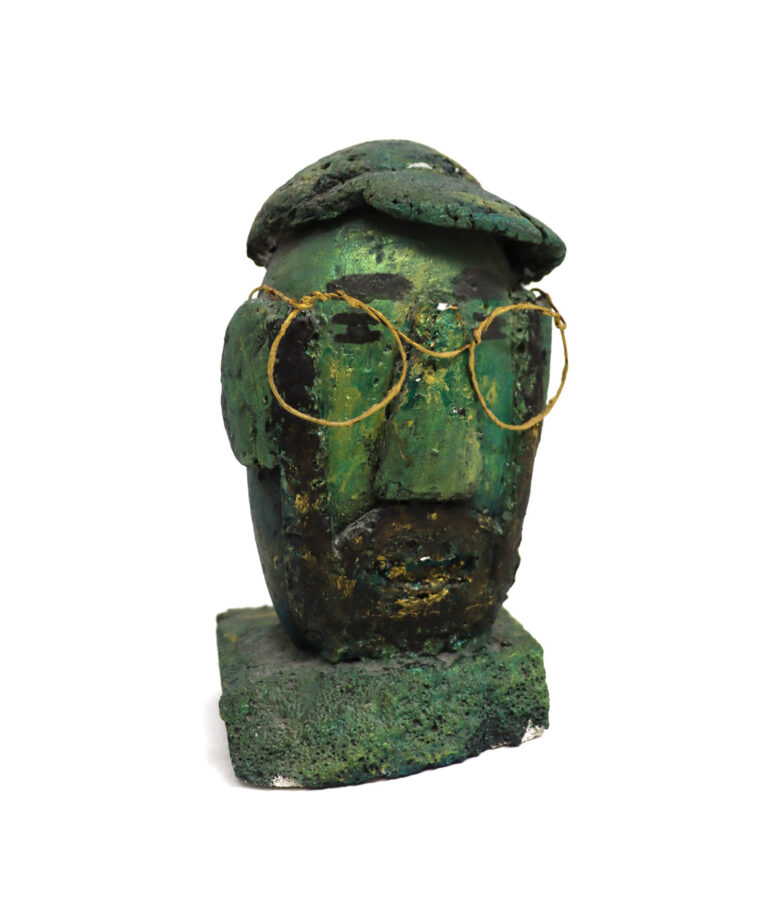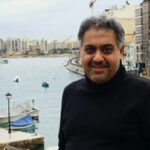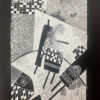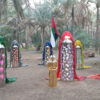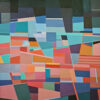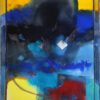


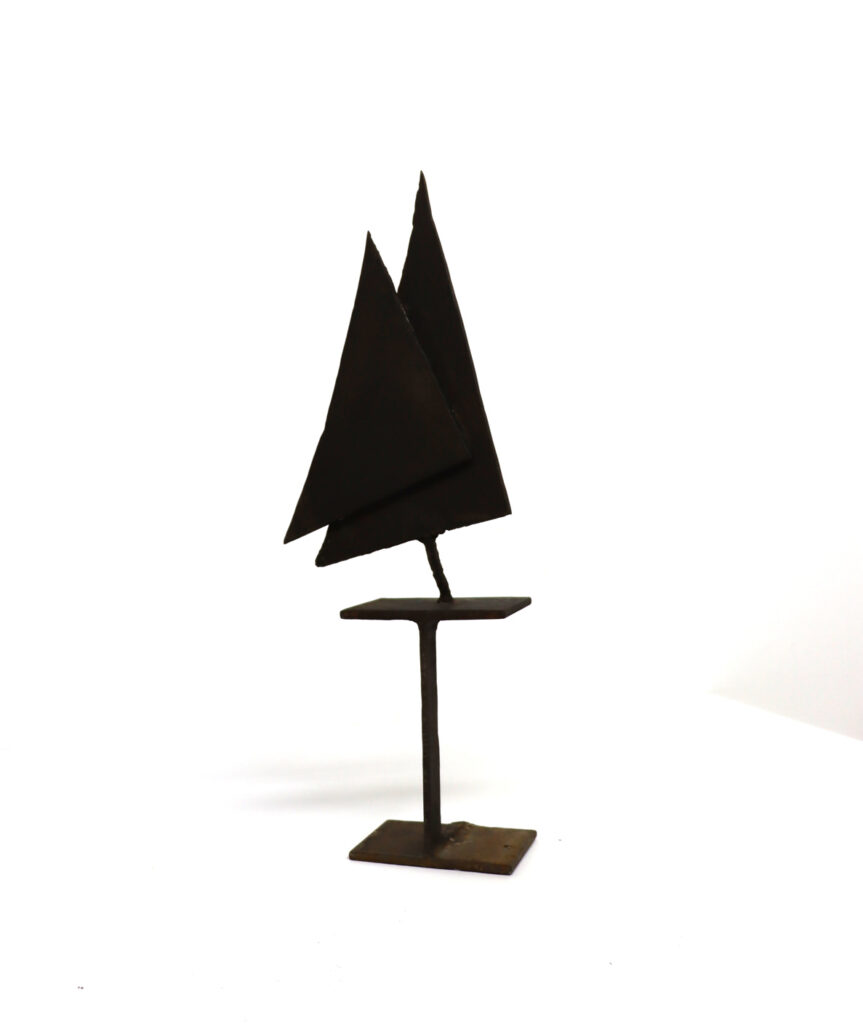
Mohammed Bulhiah (1953-2016)




Back in the middle of the 80s, Emirati Artist and sculptor Mohammed Abdullah Bulhiah joined the Emirates Fine Art Society where he became a member. Ever since, he continued to produce his sculpturing artwork for which he was recognized in the Emirati art scene. He participated in most of the Society’s exhibitions, for which he was nominated for various awards, participated in many international sculpturing forums, and many writers and critics wrote about his artworks and their instinctive and primitive features. His work path seems to be filled with participations and accomplishments. Mohammed Bulhiah has participated in all of Emirates Fine Art Society’s exhibitions, in and outside of UAE, since 1985, he also participated in Sharjah Biennials’ first 3 editions in 1993, 1995, and 1997. He was featured in 4 solo exhibitions; among them, we mention “Arts without Borders” at the American University of Sharjah, as well as representing UAE at the International Festival of Love and Peace, South Korea, where he was awarded a gold medal.
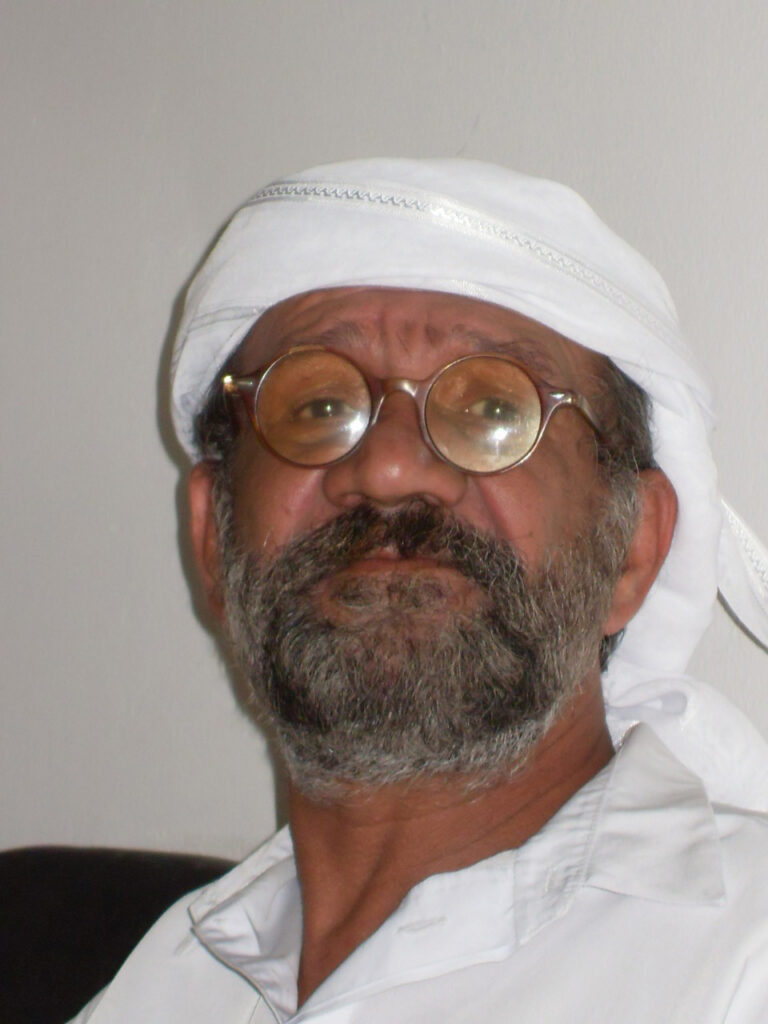
In addition to other several awards in sculpture; first place in sculpture at the 21st general exhibition of the Emirates Fine Arts Society, the sculpture award at The UAE in the Eyes of Its Artists, Abu Dhabi Cultural Foundation, as well as many awards, achievements, and certificates.
Artist Mohammed Bulhiah’s sculptures are driven by his fondness for embodying his ideas into three-dimensional formations, with the help of his applied experience stemming from his studies at Sharjah old Industrial School where he acquired his industrial skills back in the late 60s. He produces his sculpturing artwork – as I knew him to do personally – from a notion that is conceptualized in his mind so that all is left to do is shape it in a three-dimensional form. He starts to gather the needed materials to form the piece that embodies this idea. That, in my opinion, denies the possibility of changing the formulation features of this piece while working, a thing that I witnessed during my prolonged relationship with this artist. The imagined boundaries of the idea are clear enough for this artist to shape the boundaries for creating it from the beginning. We might see, from another perspective, a direct feature of this artist’s ideas, which is then reflected in his resulted artwork. Many viewers might perceive it as superficial because of this direct feature; however, I feel the need to point here that Bulhiah did not leave his artwork as direct as might seem, instead he added clever symbolism to preserve its artistic nature. His aim also wasn’t the numerous details, but the established essence of form with the eternal and endless meaning. This then marked his artwork with this undeniable primitive instinctive semblance, which could be the intention all along when he said “I discover the essence of things, their origin, their purpose, their core matter”(1)
This could be clearly seen in his wooden pieces, and is even clearer in the pieces made from stone and marble. We can see in some of these stone or marble pieces, that a few notches in the sculptured piece were enough to reach their purposed formation, and those notches would finesse the external shape of the sculpture, i.e. the space it occupies, and they make the lumps even more meaningful. This could only affirm the primitive inclination in Bulhiah’s methodology, and this revealing of inner denotations by carving in the stone is nothing if not a resonance of the caveman probing around his cave in search of a bump in the wall to carve the beast he was to hunt, and this carving would bring life to this beast depiction making it all the more dreadful.
As for the topics of his artwork, they’re mostly fables and local symbols or human general issues, and those could entangle as we sense a form of human familiarity among the binary components he uses. Binary in general is the symbol of mating, coexisting, merging, and qualitative or positive variation. It could also symbolize contradiction or opposition within pairs such as light and darkness, good and evil, power and weakness, and so on. So are those binaries embodied as opposites in his work? No, he displays these binary with all of its possibilities, and with plenty of suggestions implied in the size of the sculpture, its texture, and the varied relations between lumps and voids. This binary in his sculptures is harmonized, inclusive, and with a sense of closeness to the essence of the human. In other topics, we might find an artwork portraying the convergence between man and machine, or a visual summarization of old fables and ancient life symbols of UAE, such as boats and oars. We also find a presence of Emirati women wearing a traditional head veil, or a mother, with a child or more. We also find an amusing sculpture depicting some of the local environment life forms. This local feature is supported by using local raw materials to produce them or artificial materials made and used locally as they are present in the viewer’s unconscious mind which creates a conceptual and morphological relevance to the local viewer in particular.
In his artwork from the eighties and early nineties, Bulhiah didn’t pay enough attention – in my own opinion – as to how his works affect the space, which is a quality for sculpturing. What mattered most to him was for the sculpture to embody a certain idea in his mind. This could have affected the quality of volume that we can perceive from the way a shape affects the space around it. He focused on the details that can be seen easily by the viewer, which can deliver the idea that the artist wants to convey clearly. However, this might have made some of his early sculptures to be perceived in no more than their mere presence, or to use other words, those sculptures did not have the suggestive potentials that allow to study them in the light of new aesthetic aspects. The artist’s main purpose was to bring his ideas to life, just as he pictures them in his mind, and this dominated his artwork at that stage.
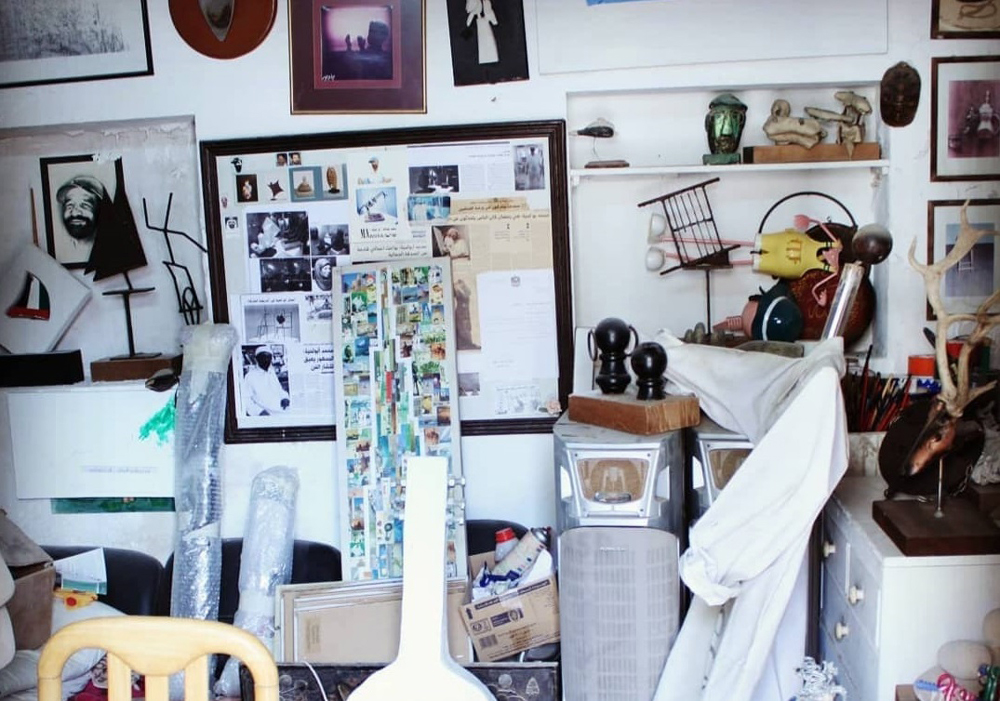
Over the years, while Bulhiah stayed in touch with sculpturing pieces in galleries, and participated in local and international sculpturing forums, his artworks have gained specific features that made them more advanced and effective. We could clearly see that the effects of Abstract Expressionism have found a way into his artwork. This movement has gone down the path of lessening “sculpturing”, and an obvious example of that would be David Smith’s “Hudson River Landscape – 1951”, a famous sculpture by the American Artist, in addition to the numerous art pieces by Abstract Expressionists which have reduced the differences between a painting and a sculpture. In their work, there was a clear avoidance of the masses and clustering, and for that matter, there was avoidance of many of the accustomed limitations of sculpturing by using steel or welded steel. for the importance of this movement or this artistic style, which blemished many of Bulhiah’s sculptures, and for familiarizing the reader with it, I decided to add an overview of this Abstract Expressionism style in sculpture, which is my own summary and translation of two books; (Movements in art since 1945) by Edward Lucie-Smith and (Abstract Art) by Anna Moszynska:
“It seemed clear, since the beginning of the first half of the 20th Century that sculptures production was meant to break the familiar chains that limit sculpture in materials and tools. Artists such as Picasso, Prancuzi, Rodshinki, Giacometti, and Kaldr have made sculptures with characteristics that were previously limited to photography. Examples of those would be coloring the sculpture, attempting to create visual illusions, and placing focus on the sculpture’s façade, as we can see clearly in Picasso’s African faces. This is, undoubtedly, an attempt to keep up with the straightforwardness of paintings. We can also see the concordance between the sculpture and its base, and perceive the sculpture as an independent identity with Prancuzzi. With Giacometti, we can see how the smaller sizes of sculptures were adapted; the smaller his pieces were, the more of sculpturing nature they become.(2) With that, sculpturing has become more open, more concerned with light and motion effects, and less monolithic.(3)
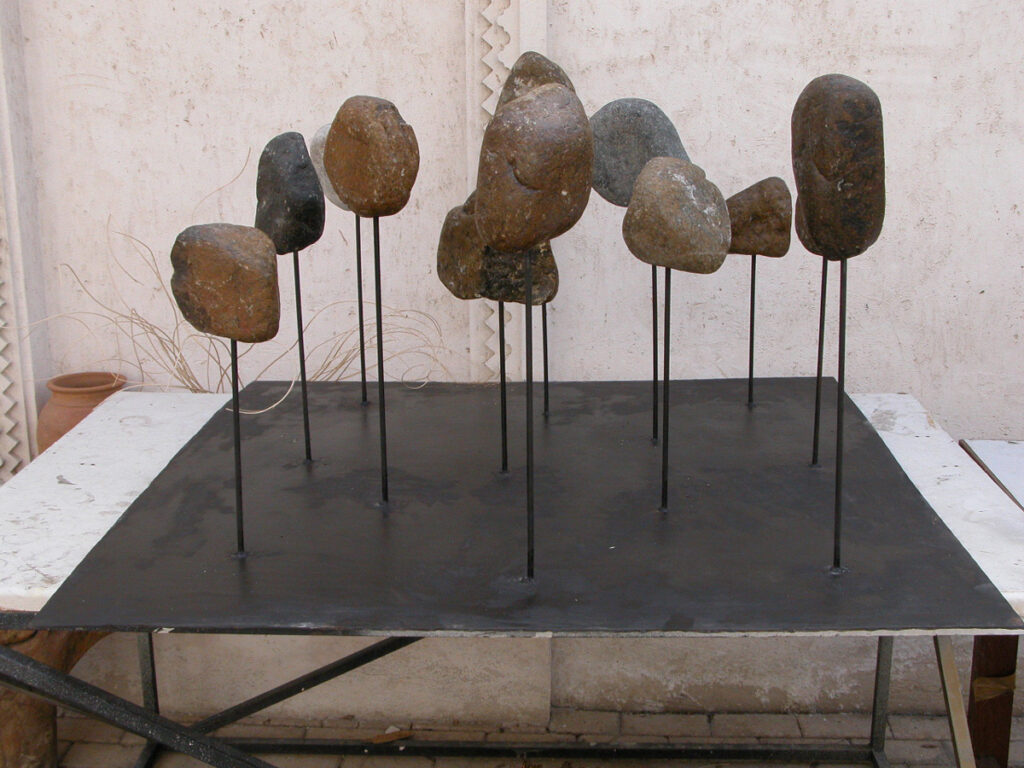
This all seemed like an answer to a group of American sculptors as they were exploring the sculpture’s ability to compete with the prestigious artistic movement in New York back in the fifties of the last century, Abstract Expressionism. Artists such as Simor Lipton, David Herr, Herbert Ferber, Ibraham Lasao, Robin Naccian, Theordore Rozak, and David Smith, have managed to create metal sculptures that parallel the visual arts of Abstract Expressionism. They were freed from mass and clustering in the sculptured piece, as well as many other conventional limitations, by using steel or welded metal in their work. Plus, this technique has provided them with tremendous constructional capabilities. Their artwork has become more and more abstract, and in some cases – due to the lack of sculpture density – enabled them to reach the “non-sculpturing” limits.
David Smith, perhaps, was the most genuine among this group. As he started to make metal sculptures in the early 30s. Before that, he started to study Photography Principles with Arshile Gorky, and Willem de Kooning – the most famous abstract expressionist artist – in Art Students’ League in New York. This colorful background derived from his studies has led him to feel that there was no substantial difference between photography and sculpture. Therefore, Smith started to create his sculptural pieces in the same way Jackson Pollock used to paint. Smith used to draw the shapes on steel panels, cut them, and rejoin them again by welding them together, to a point where some critics stated that Smith’s works reached an extent to where they were “non-sculptural”, whether in objectives or in effect. The clearest example of that would be the artwork I mentioned earlier “Hudson River Landscape”. As an inevitable outcome of his talent, Smith managed to gain as much fame in sculpture as Pollock’s fame in painting during the period of post-war world II. Thus, the question of whether sculpture can compete with Abstract Expressionism Photography – which was the spotlight at some period – started to fade.(4)
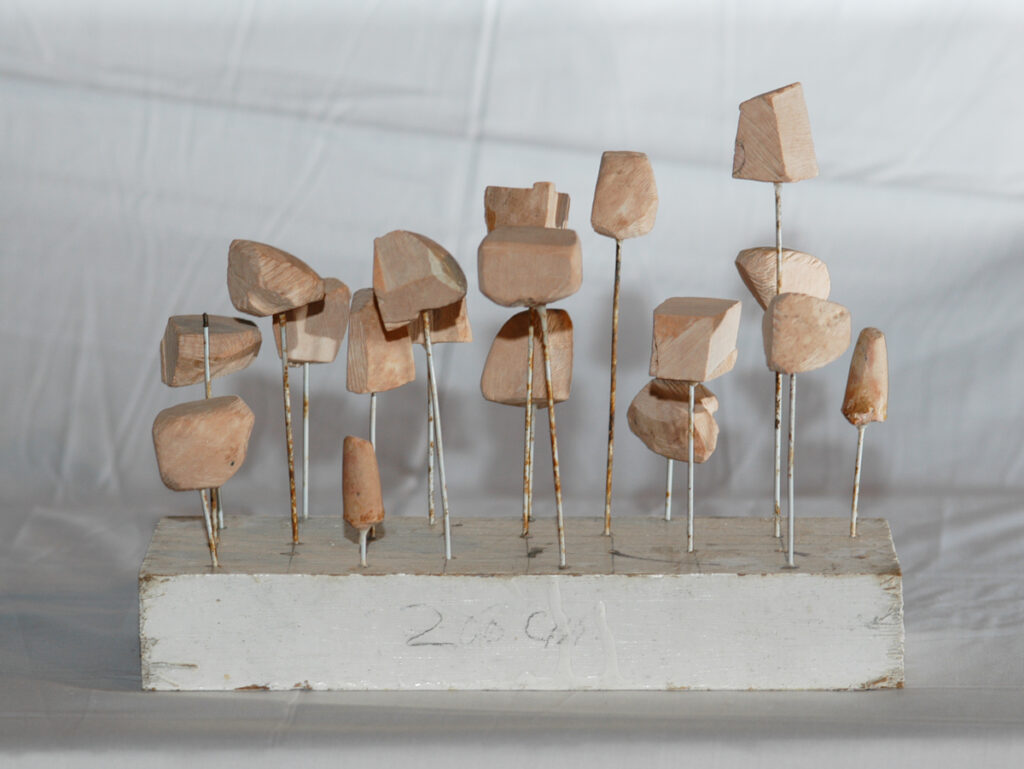
Muhammad Bulhiah was famous for making many of his late artwork using the welded metal technique. What helped, as I stated earlier, was his applied experience stemming from his Industrial studies. These artworks in particular have gone through key progress, gaining praise from critics and followers. As Dr. Shaheen stated, describing those pieces: He managed to achieve the comprehensive sculptural positioning with all its artistic properties and constituents, using the minimum level of elements and components, and in a modern artistic vision that indicates the expertise accumulated on an already established talent”(5)
The way I see it, Mohammad Bulhiah had his unique way of addressing the volume-space relation in these artworks by allowing the metal edges of his welded pieces to interact with the surrounding space with their binary components. However, this wasn’t enough for him, as he managed sometimes to confine space within his welded bars. This space was in itself, and at the same time, an imagined volume. The sculpture edges were faded lines but they contained this space and dominated it to make it a voluminous element, and therefore was a shape with signification.

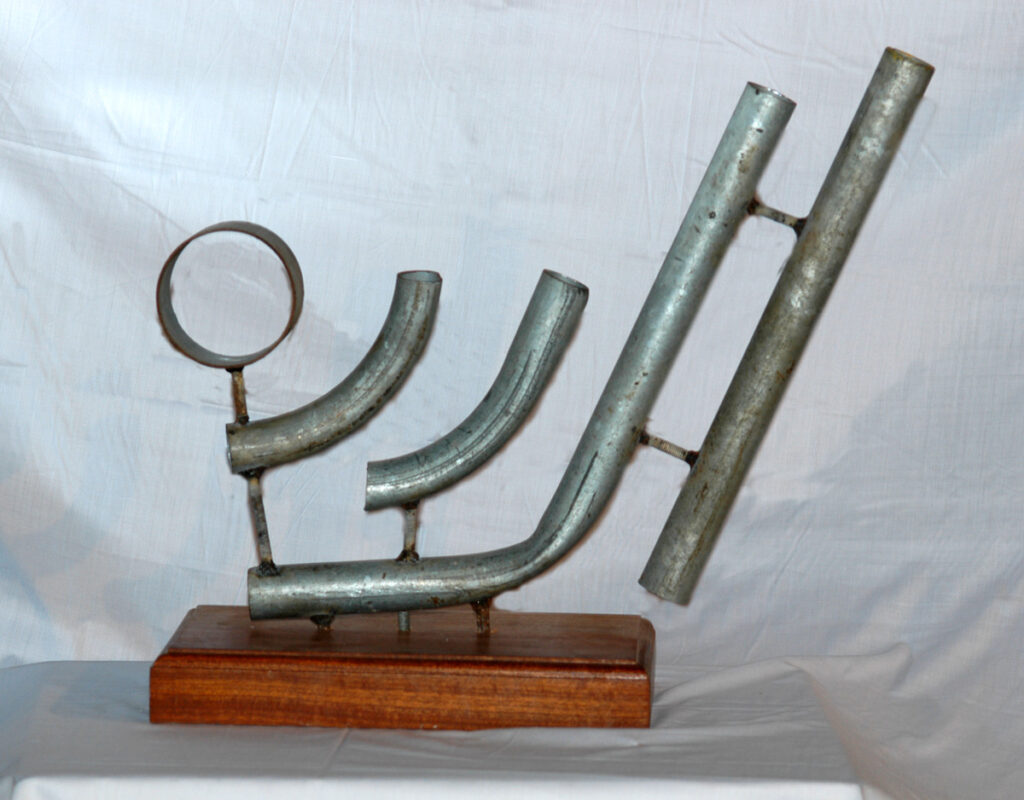
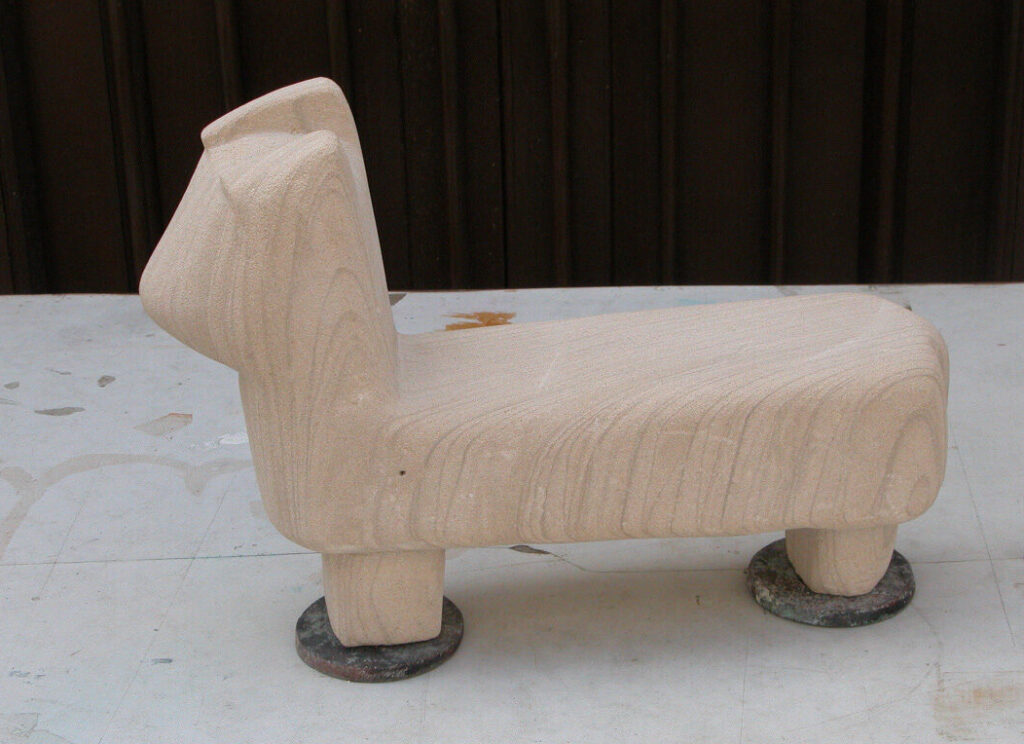
1. From a catalog for artist Muhammad Bulhiah’s exhibition, held after he died at Emirates Fine Art Society in February, 2013.
2. Movements in art since 1945by Edward Lucie-Smith, London 1989, page: 195
3. Monolith: A single great stone often in the form of an obelisk or column.
4. Abstract Art by Anna Moszynska, London 1990, page: 186-170
5. (Emirates Culture) magazine, 9th issue, Page 84
A researcher for knowledge, visual artist, art critic, poet, musician, and director of the Artistic Heritage Department at Sharjah Institute for Heritage.

